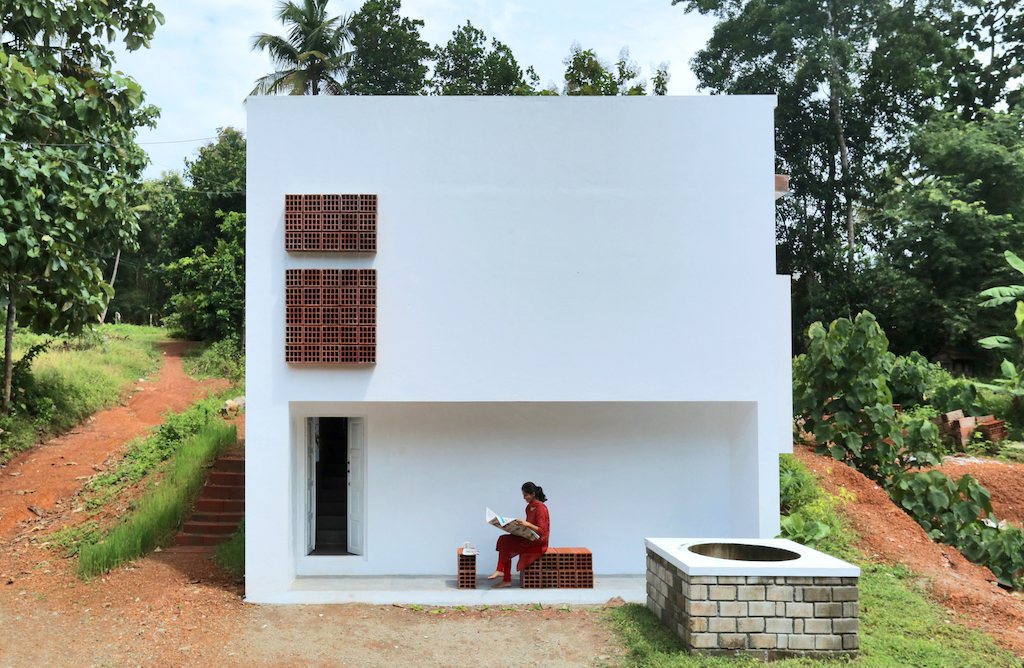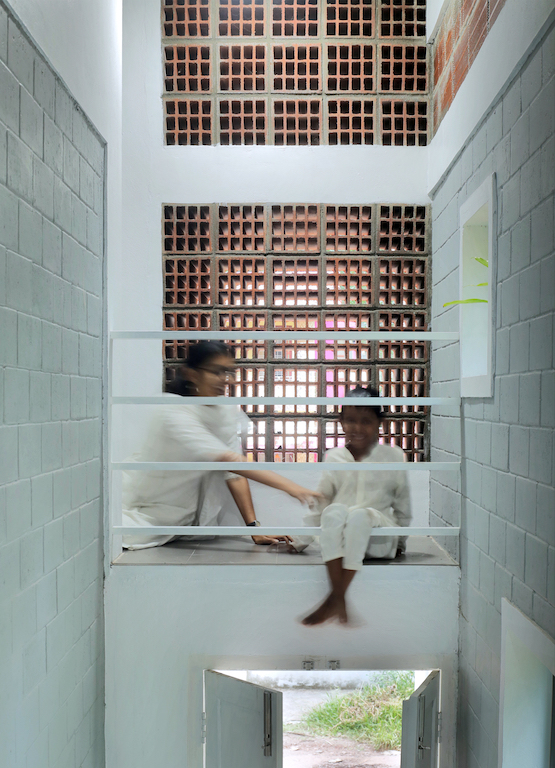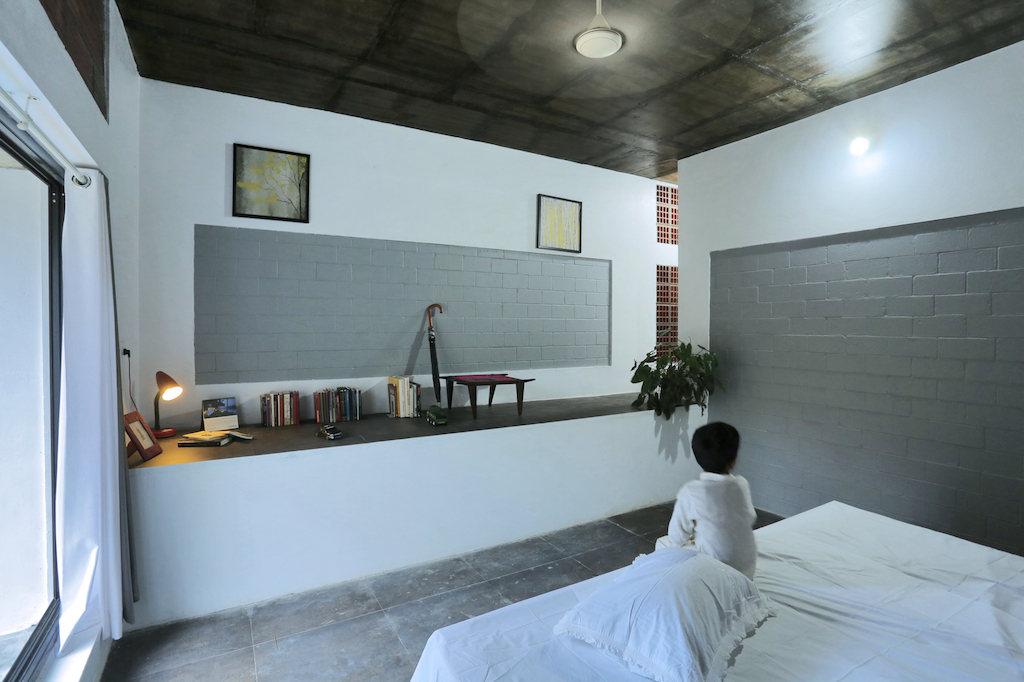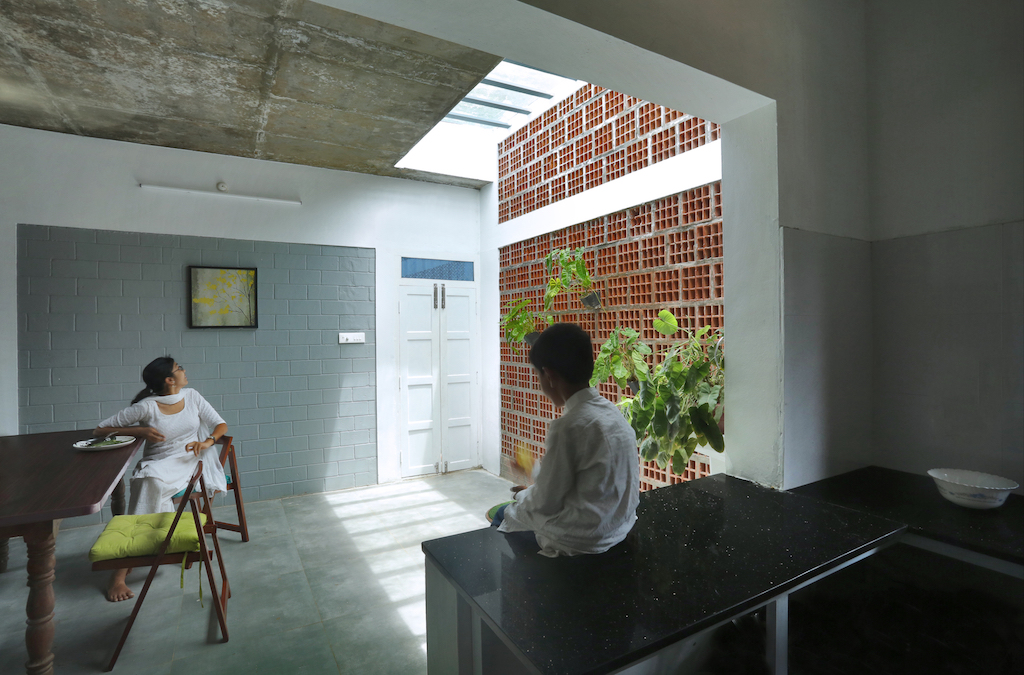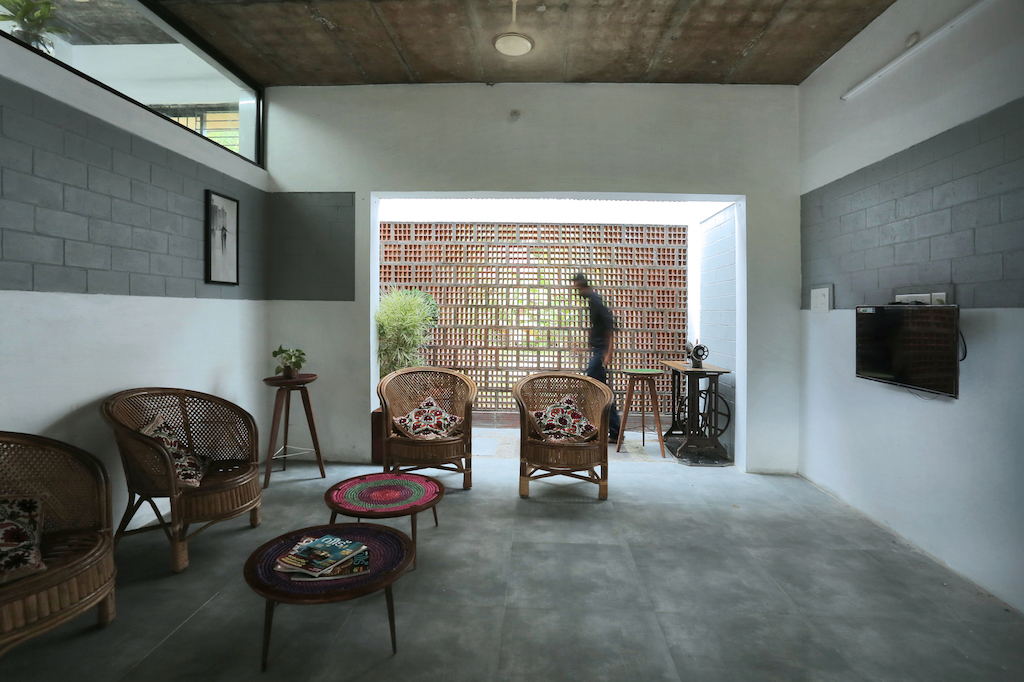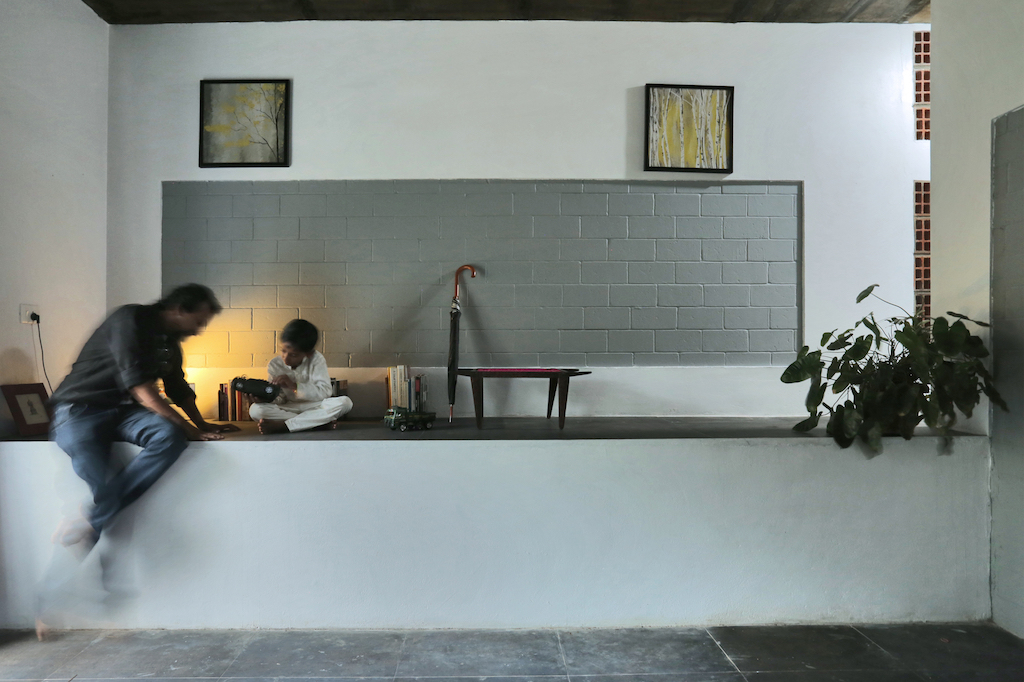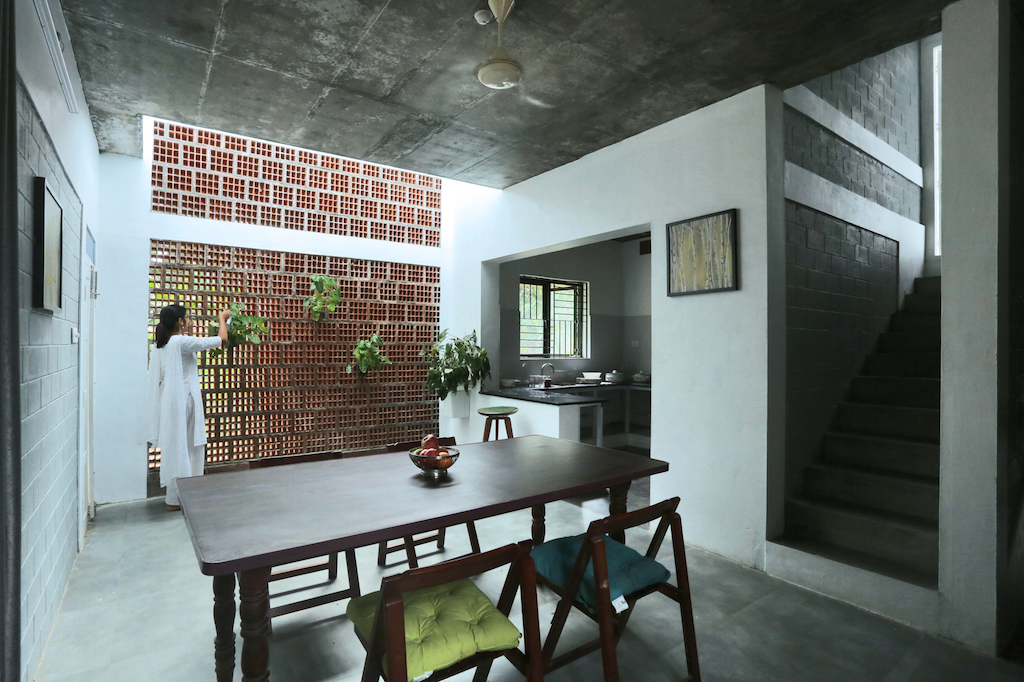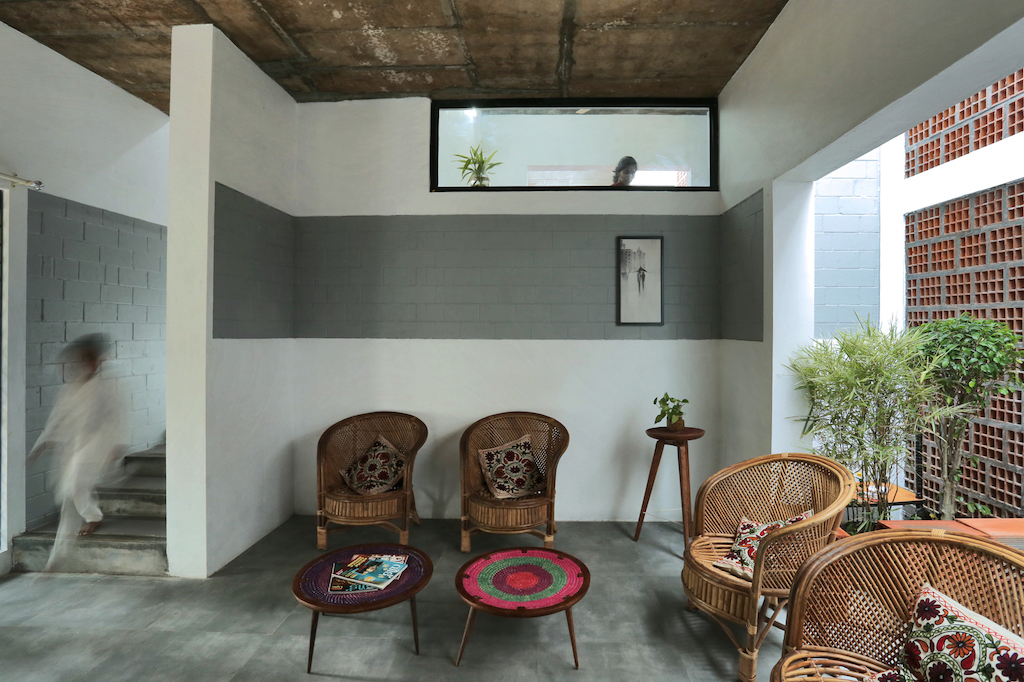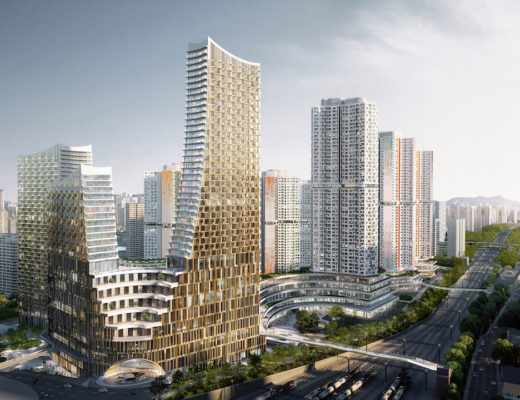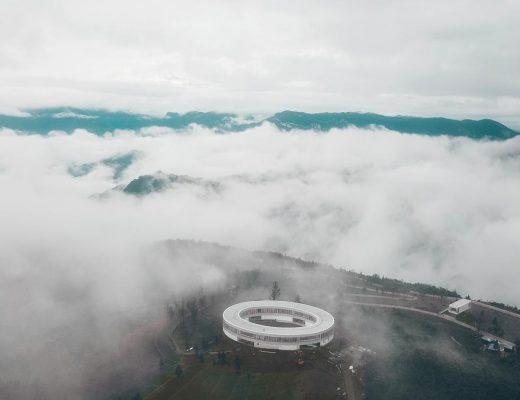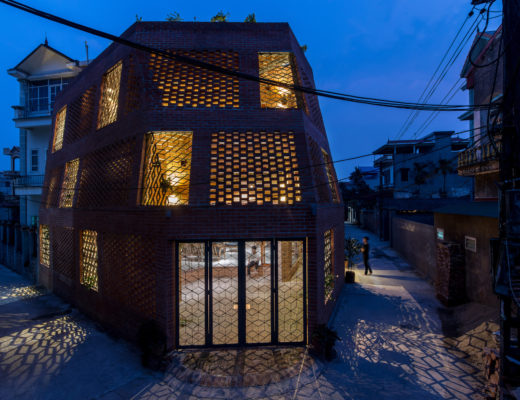Ego Design Studio has designed a compact house in Chathannoor town in the southern Indian state of Kerala. Built with a limited budget on a relatively small sloping site measuring 88m² in a warm humid tropical climate, the house was commissioned by a lottery seller, where he now lives with his wife and their 5-year-old son, with a grandmother visiting regularly. The project had to be completed on a limited budget of US$16,000 (INR12,00,000).
The design of the residence strikes a balance between the architect’s design objective, and the residents in terms of the intimate customised spaces where they can design the spaces according to how they intend to use them.
The project is an effort to redefine the popular social notion of quantity over quality of space. Eschewing the traditional concept of a big house denoted by its number of rooms, this one attempts to give each space multiple identities based on activity and time. The inner primary activity spaces flanked by thermal and activity buffers- a level navigating step corridor and courts – offer potential spatial appropriation for the users. They form an individual’s personal activity space when needed, and enlarge into a larger spatial construct for the family when required.
The buffer spaces are where the child can appropriate his activity niches, allowing him to build his own perception of home. This personalisation acts as a binder in memory formation and increases personal association with the space.
You might also like:
unTAG Architects designs low-impact and affordable luxury house for retired farmer in rural India
Modern house by Neogenesis+Studi0261 stands out in rural Indian surroundings
Srijit Srinivas Architects designs a sustainable multifunctional house in India using bricks
The exterior responds to the nearby boundary conditions and the local climate. Each façade responds to the immediate neighborhood through its porosity. The south side is agricultural land which has the possibility of staying as an unaffected open area for a few more years. The overlooking facade is an interlock brick wall with specific openings framing the agricultural land at different levels and the main door opening to the same.
Towards the north side lies a small vacant land with the proposal for a new building, which will reduce views and privacy while also reflecting heat from the south-facing walls. Hence the entire northern facade is made of porotherm brick, porous along the common areas and solid with curtained windows along the kitchen and sleeping spaces.
Facing the main vehicular approach road, the frontage is the least porous face, with only a side entrance door and the ventilating porotherm latticed window. A void carved out of the stark white solid, creates a subtle verandah space recessed within the front façade. The west-facing backyard being tree-covered has a large verandah and a common sitting space, opening to the greens.
The built form is aligned along the east-west direction, with its longer sides with major openings facing north and south, while its porosity allows ample wind movement. The house has a temperature condition of about 5 to 7 degrees less than the surrounding houses due to usage of porous windows, Weinberger materiality and thermal buffers. Locally available concrete interlock blocks for the remaining walls with a manufacturing unit nearby to be manually carried to the site. Windows were derived out of block sizes to avoid cutting the bricks. Old wooden doors were sourced and reused from the demolished house. Metal pipe lintels have been cut into the bricks instead of concrete lintels.
Photos: Prasanth Mohan (Running Studios)

